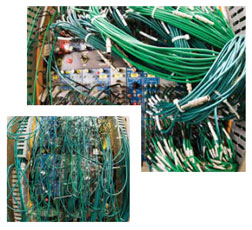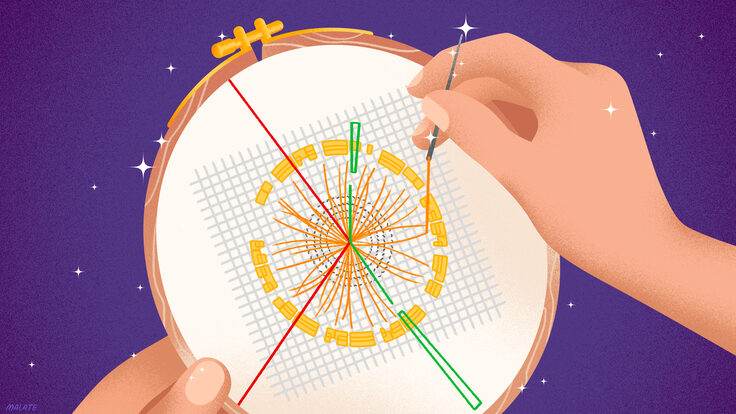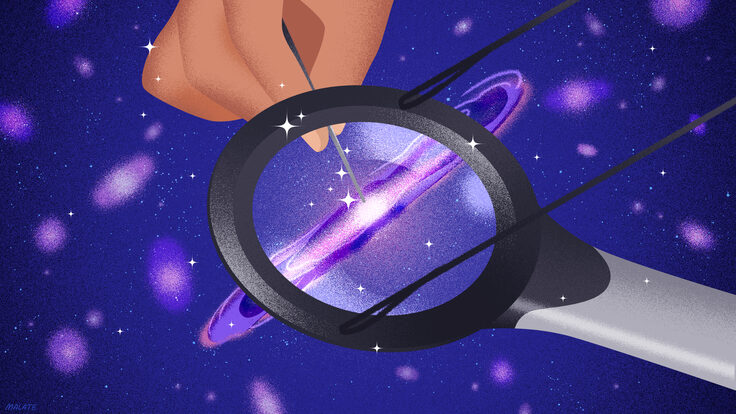 |
| Photos: Reidar Hahn, Fermilab |
Electronic personalities
Some claim that handwriting can reveal personality traits. Large, free-flowing loops reflect an easy-going nature; squiggly strokes, creativity.
Some physicists think equipment offers the same insight.
"Sometimes electronics are very expressive. They can reveal a lot about their builder," says Teppei Katori, a graduate student from Indiana University. "You can tell how cautious people are, whether they have a sense of humor, or even if they require a lot of order. You just have to know where to look."
At SciBooNE, a Fermilab-based neutrino experiment, racks of electronics the size of refrigerators power the detectors and collect data. A single graduate student may build a large section of this equipment—and it takes just one glance to guess who.
On the first rack, bundles of red, green, and black cables flow smoothly, like muscle fibers in a fast, lean animal.
"You can tell this person is very organized. All of the cables flow beautifully," Katori says. It's obviously the work of Yasuhiro Nakajima, a graduate student at Kyoto University: "He's a perfectionist, and his dexterity's very good."
Across the walkway, cables of different lengths and shades of green look frazzled, as if drunk on electricity. Typed labels have given way to handwritten notes in multiple colors.
"Yoshi built this detector," Katori says. "It looks messy, just like his room."
The builder agrees.
"I'm creative," says Yoshinori Kurimoto, also a Kyoto grad student. "I think that part of my personality comes through."
The last tower of circuits and cables is surrounded by portable fans, an arrangement reflecting the cautious nature of Columbia University's Camillo Mariani.
"Why all the fans?" Katori asks. It's important to keep the electronics cool, but Mariani has twice the necessary number.
Morgan Wascko, co-spokesperson for SciBooNE, says the experiment encourages creativity: "We try to give people leeway to express themselves, to develop their parts of the detector in their own ways. The bottom line is it does the job."
Jennifer Lee Johnson
Click here to download the pdf version of this article.






